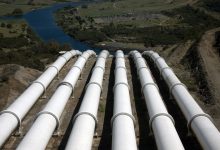The NSW Department of Planning, Industry and Environment (DPIE) has issued a call for feedback on the Environmental Impact Statement (EIS) for the “main works” to be undertaken as part of the Snowy 2.0 pumped hydro project, which is attracting fierce criticism for its potential impacts on the Kosciusko National Park.
At the core of the Snowy Hydro 2.0 expansion will be the establishment of a new underground tunnel linking the Tantangara and Talbingo reservoirs and the commissioning of a new underground power station that will operate as Australia’s largest pumped hydro energy storage system.
The main works for the Snowy 2.0 project will include the removal of an estimated 9 million cubic meters of excavated rock. The federal government owned Snowy Hydro has proposed that more than half of this excavated material be relocated within either the Talbingo or Tantangara reservoirs, with the remaining material used to establish permanent structures, or for land forming.
The Snowy 2.0 project, the pet project of former Prime Minister Malcolm Turnbull, and embraced with enthusiasm by current energy minister Angus taylor (whose grandfather was chief engineer on the original scheme) will substantially increase the amount of water storage within the Snowy Hydro scheme.
This will include the addition of 2,000MW of pumped hydro energy storage capacity, and 175 hours of storage, or a total of 350,000MWh of energy storage.
“If approved, the Snowy 2.0 Main Works would involve the construction of an underground power station with a generating capacity of around 2,000 megawatts and approximately 27km of power waterways linking the existing Tantangara and Talbingo Reservoirs,” the DPIE executive director of resource assessment David Kitto said.
“It could increase the generation capacity of the existing Snowy Scheme by almost 50 per cent and provide 350,000 megawatt-hours of large-scale storage capacity for the National Energy Market.”
“We appreciate the level of community interest in this project, and we want to give the community sufficient time to have their say. This is why we are exhibiting the EIS for the project for six weeks, which is two weeks longer than the normal exhibition period,” Kitto added.
The project is already facing calls from environmental groups to be scrapped, with the National Parks Association of NSW saying the project represents an unacceptable impact on the biodiversity and environmental value of its surrounding national park.
“Snowy 2.0 should not even be contemplated in the first place, due to its substantial, permanent damage to Kosciuszko National Park,” NPA executive officer Gary Dunnett said.
“Snowy 2.0 has been portrayed as a silver bullet for resolving the future electricity market and the transfer to renewable energy.”
“But, not only is Snowy 2.0 environmental vandalism, it isn’t economic. The original $2 billion cost estimate is now approaching $10 billion (including transmission).”
The Federal government owns Snowy Hydro Limited, after it purchased the shares previously owned by the NSW and Victorian governments for a combined $6.1 billion in 2018.
The Snowy 2.0 expansion is expected to cost an additional $5.1 billion, with an additional $2 billion in investment required to boost the network infrastructure connecting the Snowy Mountain scheme with the rest of the National Electricity Market and will take more than six years to complete even with a workforce working around the clock.
“Construction of Snowy 2.0 will be 24/7 and 365 days per year. The construction workforce is expected to peak at around 2,000 personnel in 2023 but will fluctuate over the six-year construction schedule as needed to align with the work activities,” Snowy Hydro Limited says in the EIS.
Snowy Hydro 2.0 will represent one of the largest single infrastructure projects underway in Australia, and will substantially reshape the operation of the National Electricity Market, with the addition of such a large amount of dispatchable energy storage.
Snowy Hydro estimates the project will increase the Gross State Product of NSW by $2.692 billion and will have additional flow-on benefits to the other NEM participant states of $4.176 billion-
The EIS is seeking input from interested parties on the potential impacts of the project on the environment, including the impact of new tunnels, modifications at the Tantangara and Talbingo reservoirs, and the underground power station and network infrastructure.
Submissions responding to the proposed environmental impact statement are open until 6 November.








